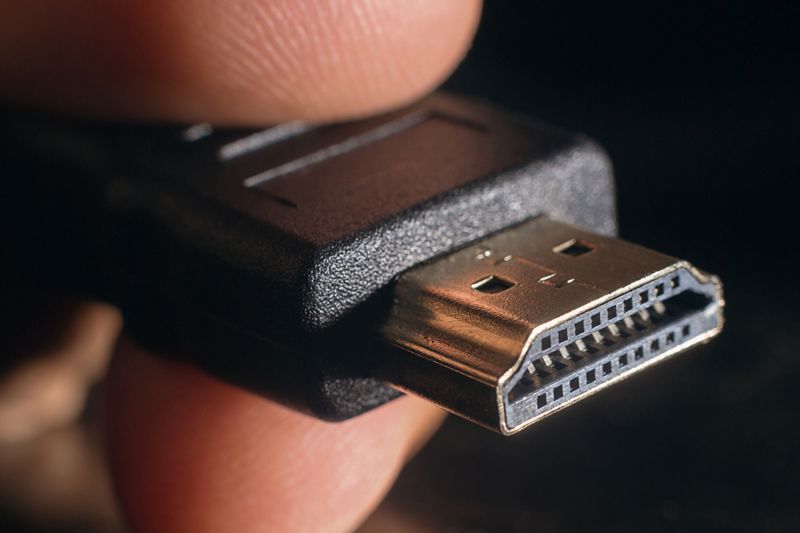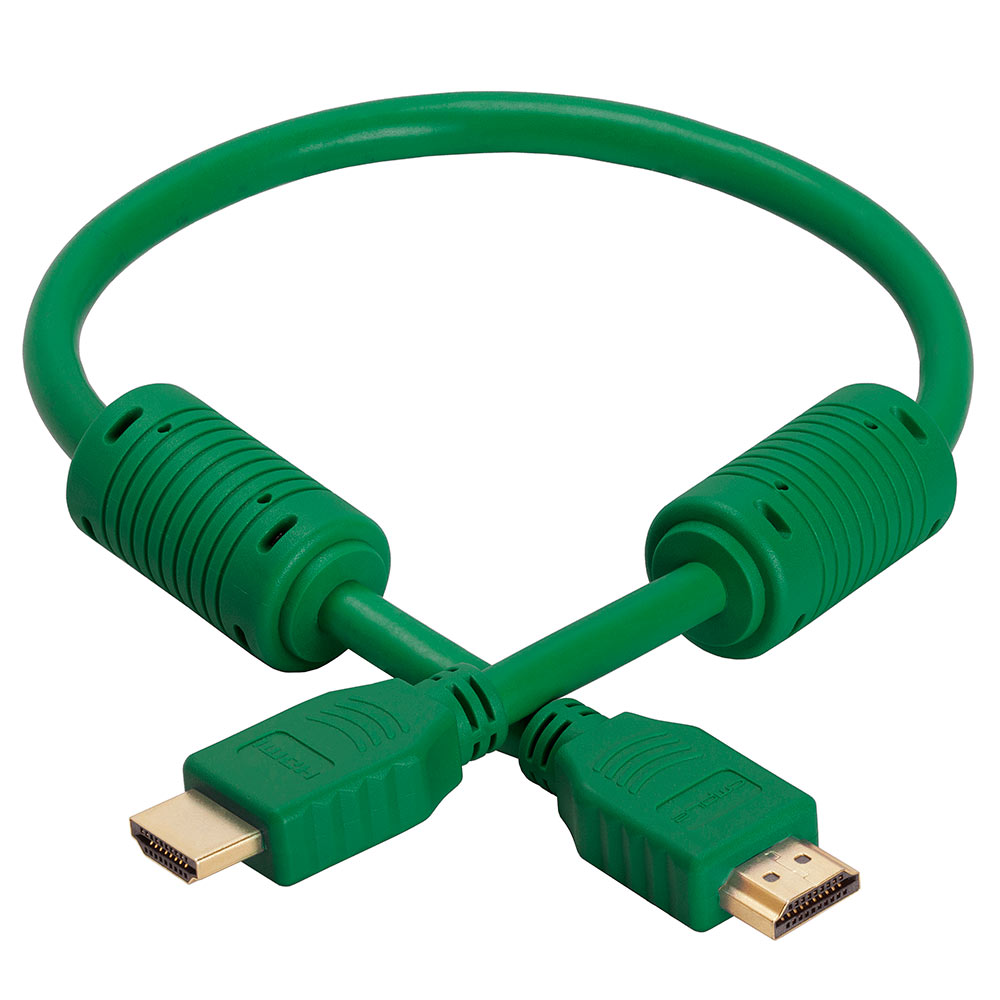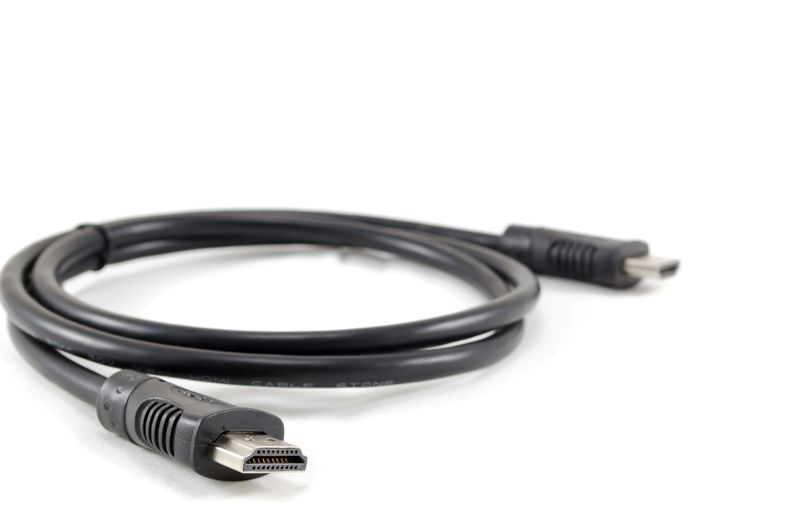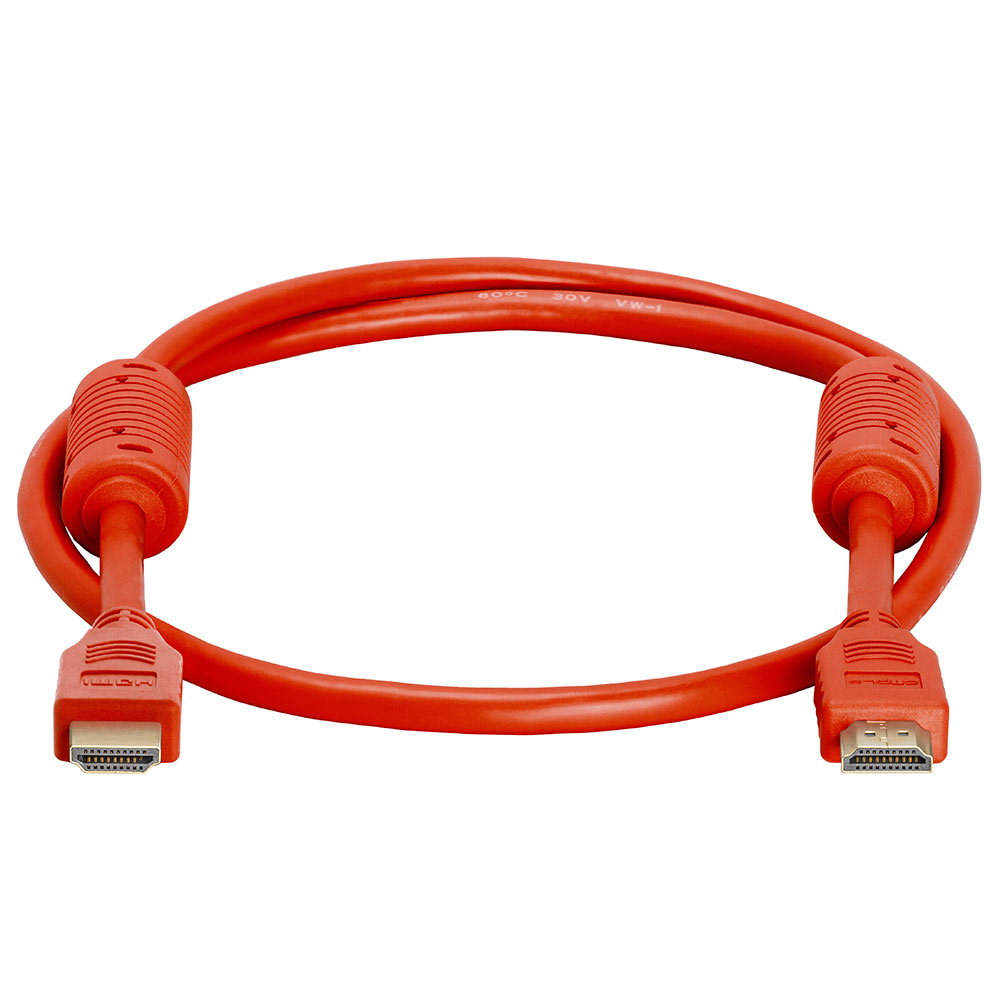LEARNING CENTER: HDMI Cables With Ethernet
WiFi has added tremendous flexibility to our lives; we’re able to stay connected virtually anywhere we go. However, it certainly has its drawbacks, particularly when compared with a wired network. Data transfer speeds are slower, reliability can be questionable, and the number of users on the network can have a major impact on performance.
These issues can make relying on WiFi connectivity a major issue if your high-definition television, video gaming console or Blu-Ray player need to be hooked up to the Internet. And running supplemental Ethernet cables to all of your devices can be a logistical nightmare.
Thankfully, the group responsible for creating and revising standards for HDMI – the universally accepted method of connecting devices for the transfer of high-definition signals – came up with the answer when it released HDMI Version 1.4 in 2009. These new standards (which also mandated support for higher video resolutions, deeper color, 3D video and an audio return channel) provided for the optional addition of an HDMI Ethernet channel (known as HEC) in HDMI cables. The Ethernet channel can carry data between two connected devices, allowing them to share a wired Internet connection.
The Ethernet portion of an HDMI cable is lightning fast. It can support 100 Mb/sec of duplex bandwidth, exactly what you need for a reliable, high-speed Internet connection whether you’re importing high-definition video or playing the very latest video games available online.
This innovation was designed to solve the problem of having to rely on Wi-Fi when hooking up an Ethernet-over-HDMI-ready HDTV or gaming system. An red HDMI cable would already be connected to the device in order to transfer video and audio signals, and now it could also be used for online connectivity – no muss, no fuss, no WiFi, and no additional cables to run.
All HDMI versions since then have included standards for Ethernet connectivity, but that doesn’t mean all HDMI cables can provide it. Here’s what you need to know in order to choose the right cable for your needs.
HDMI Basics
We’ve covered the subject of HDMI Cables in more detail elsewhere in our Learning Center, but here’s a quick refresher before we get into the specifics of cables with Internet capability.
HDMI stands for "high-definition multimedia interface", and since it was first introduced in the early 21st century it has become the worldwide standard for the transfer of digital video and audio signals for nearly all media applications. (It is much less commonly-used for computer applications.) The latest versions of HDMI can handle the extremely high speeds required by today’s video applications, deliver 4K and 3D high-definition signals in perfect digital quality, transmit up to 32 channels of surround-sound audio, support anti-privacy signals – in short, it does everything you could possibly need for a home theater or A/V system, all in a single cable.
One of the beauties of HDMI is that the standards have been designed to be backwards compatible. In other words, you usually don’t need new cables to work with equipment that features a newer version of HDMI. There are two important considerations you need to be aware of, though.
An older HDMI cable will work fine with your brand-new HDTV. However, that doesn’t necessarily mean that you’ll get optimal performance, because video standards have changed greatly over the years. Today’s high-definition video signals require the transfer of more information, transmitted at higher speeds, than “old” TVs ever did. That means that modern HDMI cables used for 1080p or 4K high-definition displays must have higher data capacity and support higher speeds than in the past, in order to display the amazing picture quality you expect. Older HDMI cables will still give you a nice picture, but are really built for and best suited for earlier model televisions. For that reason, you will see two general categories of HDMI cables on the market: standard (also called Category 1) and high-speed (Category 2). Standard HDMI cables, designed for older displays, are usually suitable for 1080p but are really rated for 1080i and below. High-speed HDMI cables can handle anything you can throw at them.
We’ve already mentioned that not all HDMI cables provide Ethernet capability. So while an older HDMI cable should work fine if you connect it to an Ethernet-over-HDMI capable device, it won’t automatically give you an Internet signal. You need an HDMI cable that has Ethernet built into it, in order to get your system online. That means there are really four categories of HDMI cables on the market: standard, standard with Ethernet, high-speed, and high-speed with Ethernet.
The bottom line is that before purchasing an HDMI cable, you need to first figure out whether you need a standard or high-speed cable, and then decide whether you will need Ethernet capability. Choosing a cable with Ethernet does add to the price, but only slightly.
Who Needs HDMI Cables With Ethernet?
First, an important disclaimer. For the Ethernet connection to work properly, you must be connecting two devices which each support Ethernet over HDMI (they’ll be labeled HEC compatible), and not many do just yet. In many ways, you are planning for the future as much as for the present when buying an HDMI cable with Ethernet. Here are the ways these forward-looking cables can work, though.
Perhaps the most popular use would be for connecting an HDTV or monitor with a gaming console like an Xbox One or PlayStation 4. A fast and reliable Internet connection is essential for live gaming against other online players, and is even necessary for downloading updates or new software. Instead of having to run two Ethernet cables, one to an Internet-ready television and a second to the game console, the same connection could be shared on the cable already running between the two components.
Another possibility is connecting a Blu-ray player to a high-definition monitor or television. Many people already use separate cables to receive Internet programming on their Blu-ray device and then send it to their HDTV; because the TV and Blu-Ray will already be connected via HDMI cable, no additional connection between the two devices would be needed.
The home entertainment world changes quickly, with new technologies appearing so rapidly that it’s almost impossible for a consumer to anticipate what might be needed in the future. For an extra dollar or two over the price of regular cables, HDMI cables with Ethernet are a great investment to accommodate the equipment that’s probably already on its way.
Frequently Asked Questions:
What is the best HDMI cable for Sony PS3 / PS4?









